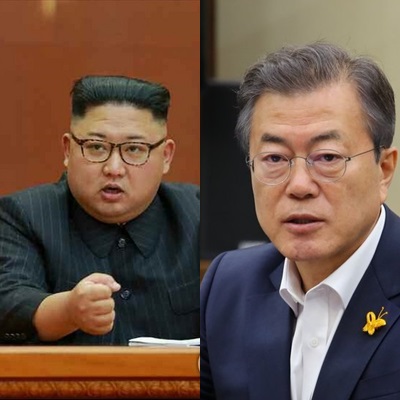 The highly-anticipated 3rd inter-Korean summit this Friday, April 27, will be broadcast live and available to internet users worldwide. Image: Yonhap |
The South Korean government has announced that people across the world will be able to tune into a live broadcast of Friday’s much-anticipated inter-Korean summit via a free internet feed. But while South Koreans are expected to follow the event in large numbers, the same cannot be said for their North Korean counterparts.
Cheong Wa Dae spokesman Yoon Young Chan announced the creation of an online platform allowing “members of the press and all people worldwide with a mobile connection to view the summit in real time.”
However, this platform is not expected to be widely available to the now 3.7 million* cell phone users in North Korea.
According to a 2017 Korea Information Society Development Institute (KISDI) report entitled ‘The present state and implications of North Korean wired and wireless communications services,’ the country appears to be in the “early stages of seeing data service offered to most cellular phones.”
“Computers in Pyongyang connected to the internet can see speeds of 70-80 Mbps, while computers outside the capital offer speeds of around 10 Mbps – the standard internet speeds common in South Korea during the 2000s,” the report continued.
Ordinary North Koreans will have trouble viewing the live feed of the summit because only a select number of elites have access to the world wide web, with the rest of the population limited instead to a heavily-censored intranet.
But even if the authorities make the feed available to the country’s intranet users, limits to data allowances and the speeds required to watch the event smoothly will impact viewability.
Mobile intranet in the North is currently provided through 3G systems, and it remains difficult for users to reliably access signal coverage needed to use voice or data services.
South Korea, by comparison, has since transitioned to 4G wireless systems, and is expected to make the switch to 5G by 2020.
Aside from the internet feed, it also remains unclear whether or not North Korean state television will broadcast the summit live. The two sides agreed on the decision to provide a live broadcast of the event, but no specific announcement has been made with regards to the North’s use of such feeds.
Most state television broadcasts in North Korea are carefully planned and prerecorded – a system said to be a result of Kim Jong Il’s fears of information being leaked unintentionally during live broadcasts.
The previous two inter-Korean summits in 2000 and 2007 were also not carried live on North Korean television.
But the country has experimented with live broadcasts since Kim Jong Un came to power. Most recently, Korean Central Television (KCTV), Korean Central News Agency (KCNA), and Pyongyang Broadcasting System (PBS) aired live scenes from a fireworks show in celebration of Kim Jong Il’s birthday on February 16.
The authorities may, however, be wary of live broadcasts after international media highlighted an apparent limp displayed by Kim Jong Un during a live airing of a ceremony marking the 20th anniversary of the death of Kim Il Sung on July 8, 2014.
But as Kim Jong Un appears to be promoting North Korea as a ‘normal’ or ‘legitimate’ nation in the eyes of the world, there may still be a possibility that the authorities decide to air the summit live.
* Estimated number according to a 2017 Korea Trade-Investment Promotion Agency (KOTRA) study: “Status of mobile phone usage in North Korea.”

















